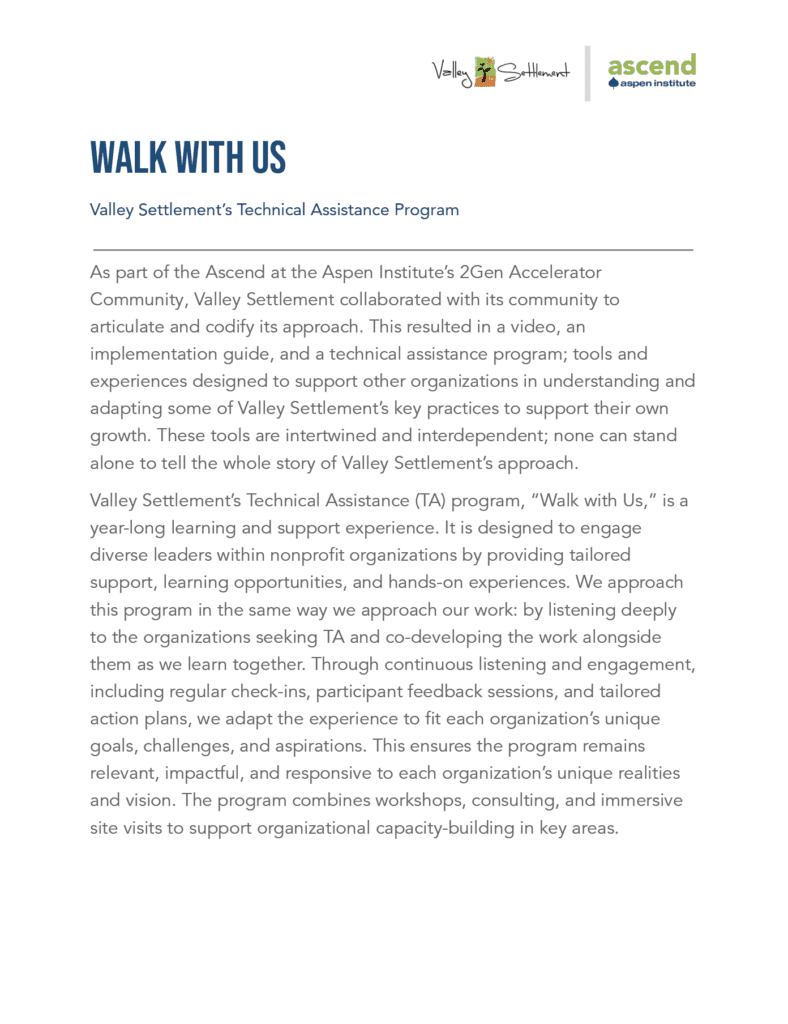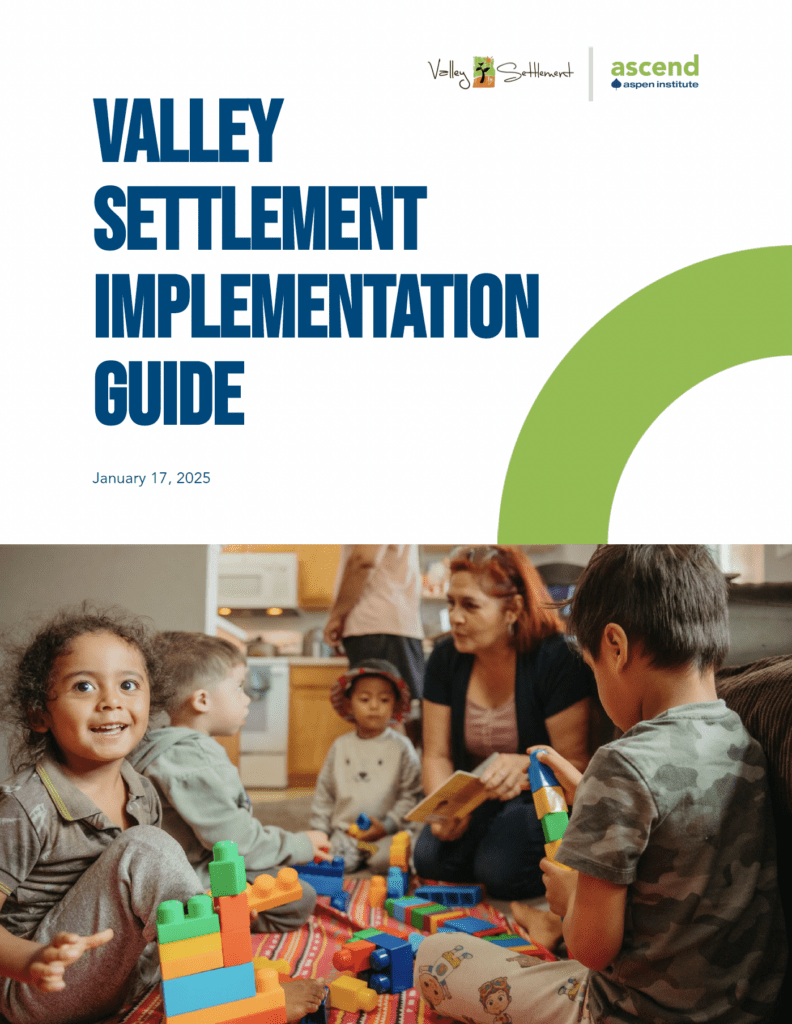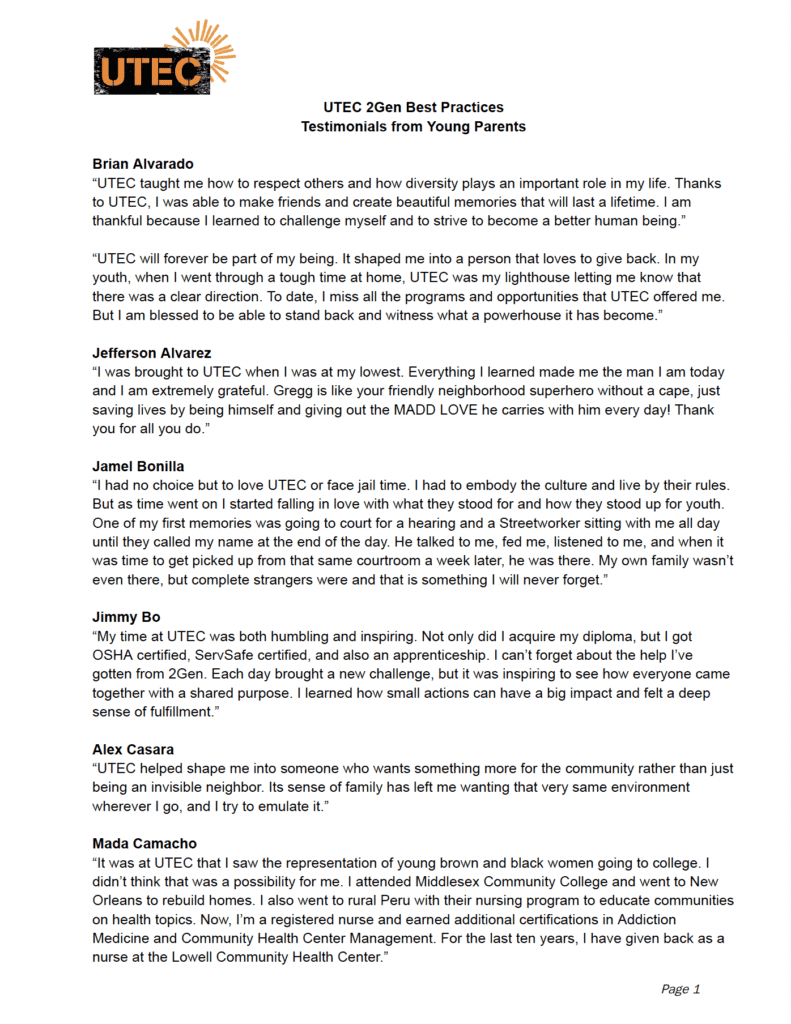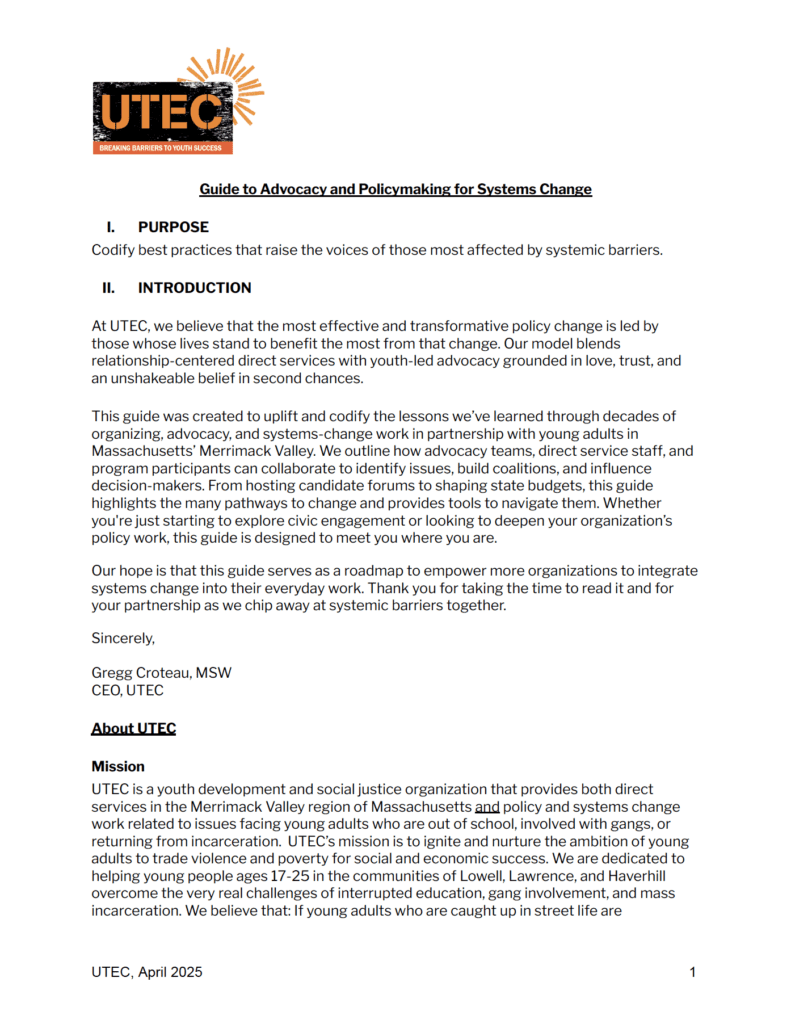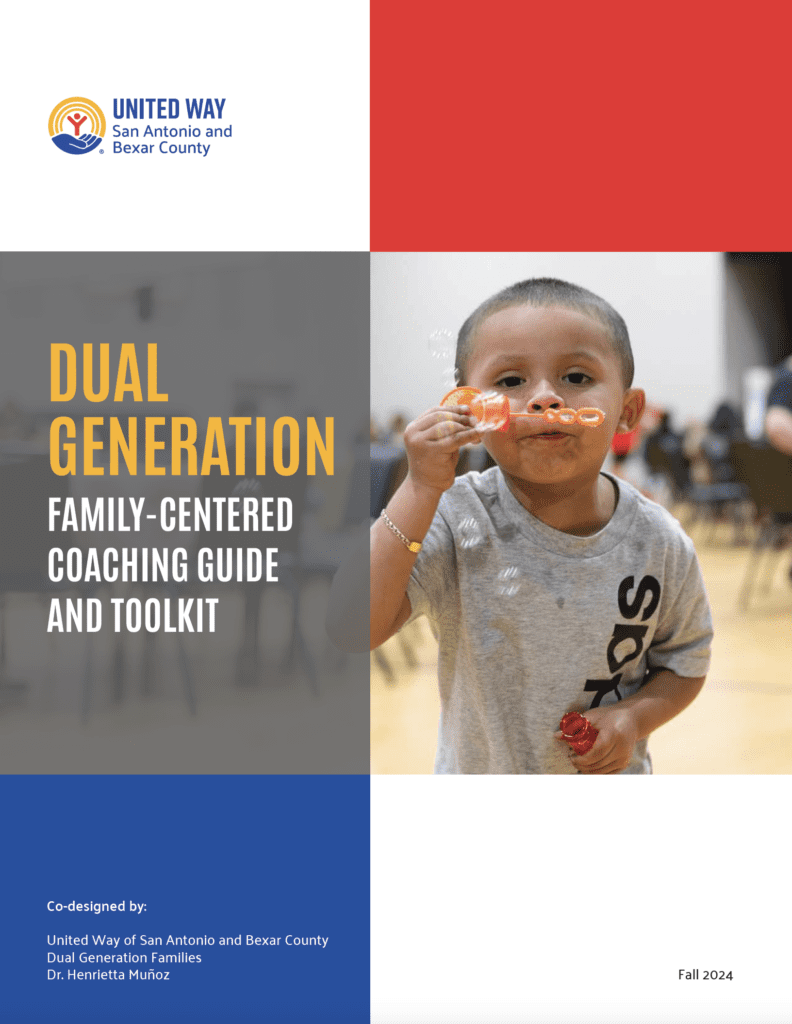THE 2GEN APPROACH
Two-generation (2Gen) approaches build family well-being by intentionally and simultaneously working with children and the adults in their lives. 2Gen approaches center the whole family to create a legacy of educational success and economic prosperity that passes from one generation to the next.

About the 2Gen Approach
Many programs focus solely on the child or the parent(s), but 2Gen approaches do not focus exclusively on either a child’s development or isolate an adult’s needs because their well-being is interconnected and interdependent. 2Gen approaches aim to integrate services and supports to move the whole family forward, benefiting both the child and the adult(s) in their lives.
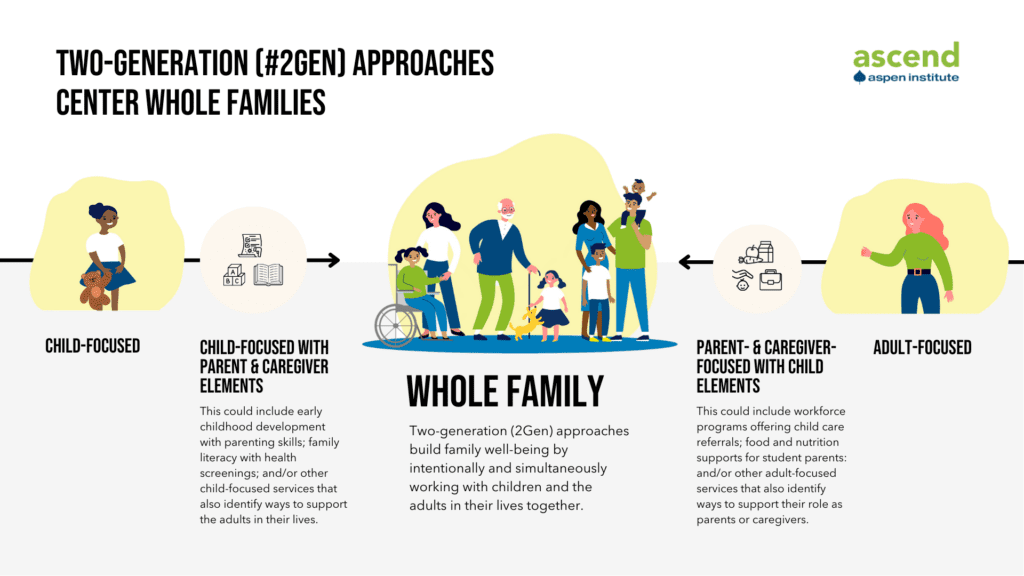
This social graphic visually demonstrates moving from a child- or adult-focused approach to a 2Gen approach, highlighting programmatic shifts that make typically siloed programs more 2Gen.
We work with families as experts and meaningfully engage parents and caregivers in designing policies and programs that affect them in order to develop holistic, integrated, and equity-focused solutions. This family-centered lens helps to immediately identify whole families’ needs and goals to inform integrations and alignments to programs that serve them, which maximizes long-term impact for families and communities.

The 2Gen approach recognizes family as fundamental to human development and that a family defines itself. This intuitive link between individual and collective success has long been recognized by indigenous communities in the US and around the globe, but supporting entire family units wasn’t employed as a formal, federal strategy until the early development of the human services sector in the late 19th century.
Key Components of Well-being

Well-being is a multifaceted process and lifelong pursuit. An individual’s or family’s well-being isn’t a solo endeavor, and financial, social, mental, and spiritual health depends on a person and family’s context, the resources and opportunities available to them, and the support of others. 2Gen approaches have a robust vision to improve conditions for families by coordinating equitable access to the systems and structures that are necessary to thrive economically and socially. Ultimately, 2Gen approaches recognize six key components to improve families’ financial stability, social capital, health care, and quality education.
These Key Components represent the supports and services that a family interacts with and needs to thrive, as well as the systems at city, county, state and federal levels that drive funding and policies that have implications for families.
- Social Capital
- Health, including Mental Health
- Economic Assets
- Early Childhood Education
- K-12
- Postsecondary & Employment Pathways

SOCIAL CAPITAL
Social capital is the “secret sauce” to a two-generation (2Gen) approach and encompasses a person’s connections to other people, information, and opportunities to give and receive support. With the 2Gen approach focused on family economic opportunity, research shows how critical social capital is, with children who grow up in communities with more cross-class interactions having significantly better chances of rising out of poverty. Social Capital builds on the strength and resilience of families and bolsters the aspirations parents have for themselves and their children.
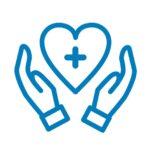
Health, including mental health
Physical health and mental health have a major impact on a family’s ability to thrive. If a child is unwell, it can affect attendance and learning in school. Similarly, a parent’s illness can impact their ability to earn or perform at work. We further know that childhood trauma, for instance, has lasting health and social consequences. Similarly, economic supports, such as housing, and social capital are important social determinants of health. The dynamics of federal and state health care access policies through Medicaid are critical factors in identifying barriers and opportunities for increasing the health and well-being of children and their parents.

Economic Assets
Financial stability is critical to a family’s economic and social mobility. Within the 2Gen approach we refer to Economic Assets as including housing, transportation, financial education and asset building, tax credits, student financial aid, nutrition assistance, and more. A relatively small increase in household income can have a significant, lasting positive impact on the life of a child. A $3,000 difference in parents’ income when their child is young is associated with a 17% increase in the child’s future earnings.

early childhood Education
Development programs, like child care, Head Start, and home visiting; family literacy. Investments in high-quality early education yield a 13% per year return on investment based on increased school and career achievement as well as reduced social costs.

K-12
More K-12 schools are adopting two-generation approaches. Schools serve as community anchors and provide strong platforms for both children and the adults in their lives to thrive. For example, elementary schools can provide summer programming for children transitioning to new grades while providing simultaneous credential programs for their parents, as demonstrated by Alta Vista Elementary School, a Title I school in Sarasota County, Florida, which developed a certified nurse assistant (CNA) program for parents of rising first graders.

POSTSECONDARY & EMPLOYMENT PATHWAYS
Parents who complete a college degree, on average, double their incomes. A parent’s level of educational attainment is also a strong predictor of a child’s success. Within the 2Gen Approach, Postsecondary work includes a focus on higher education, including colleges and universities, as well as workforce development programs.
Principles of 2Gen Approaches
There are countless essential experiences and opportunities that are required for people to reach their full potential. To facilitate connections to these supports, all 2Gen policies and programs are grounded in and guided by 5 core principles.

Account for Outcomes for Both Children & Adults

Listen to the Voices & Recommendations of Families

Ensure Racial, Gender, & Economic Equity

Foster Evidence & Innovation Together

Align & Link Systems & Funding Streams
By pairing a system that puts families at the center [Key Components] with these core guiding principles of 2Gen, we are ensuring that we are simultaneously and intentionally working with children and the adults in their lives in service of better outcomes for families.
The Reach of 2Gen
The Ascend Network was created in 2012 with 58 partner organizations to foster development of the 2Gen field. To date, we have over 630 Network Partners, representing all 50 states, the District of Columbia, Puerto Rico, Ireland, Guatemala, and Rwanda, focused on implementing 2Gen approaches in policy and practice to increase families’ economic security, educational success, and health and well-being.
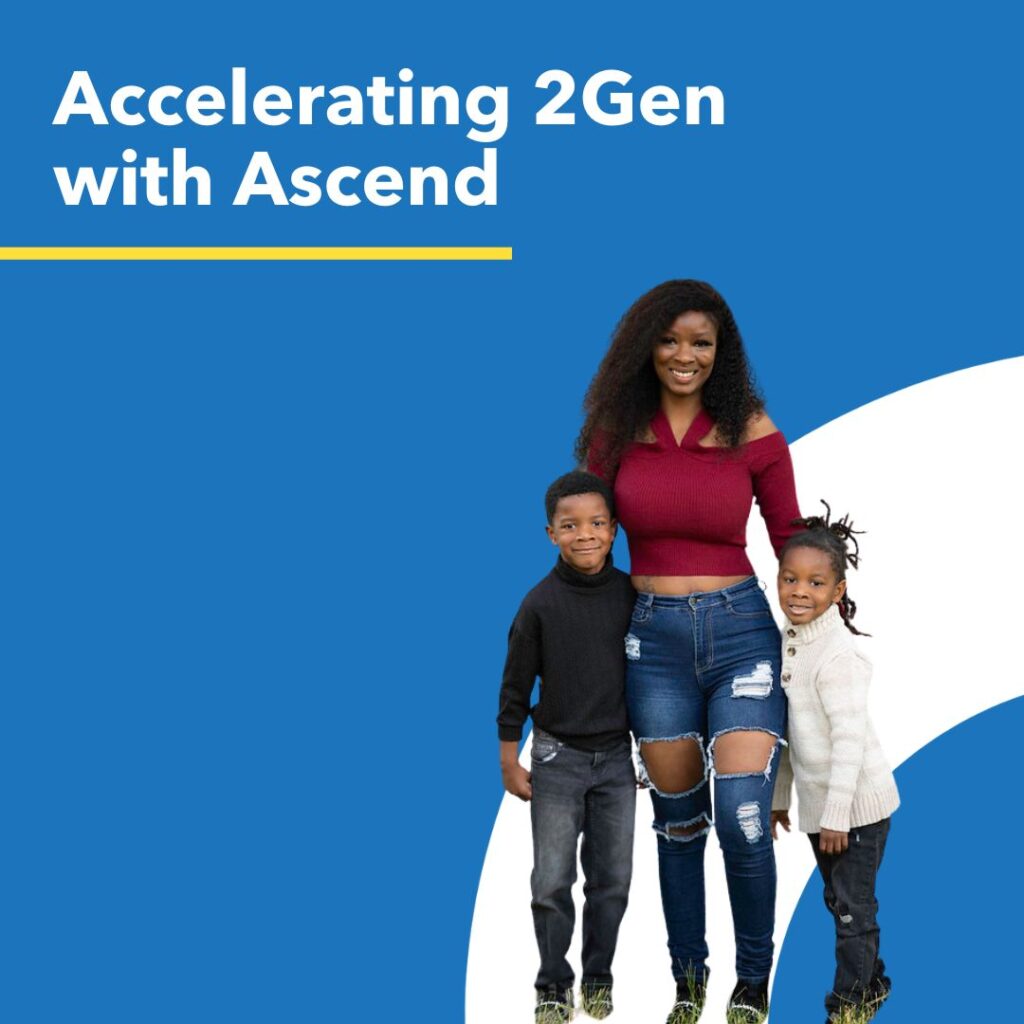
Stay up to date on the latest 2Gen news by subscribing to our newsletter.
Here are the latest editions:
LATEST 2GEN RESOURCES
Walk With Us: Valley Settlement’s Technical Assistance Program
This resource outlines Walk With Us, a year-long technical assistance program that supports nonprofit organizations…
Valley Settlement Implementation Guide
This implementation guide documents Valley Settlement’s community-centered, two-generation approach and provides practical guidance for organizations…
UTEC 2Gen Best Practices: Testimonials from Young Parents
This collection of testimonials centers the voices of young parents who have participated in UTEC’s…
Guide to Advocacy and Policymaking for Systems Change
This guide codifies UTEC’s youth-led approach to advocacy and systems change, centering the voices of…
UTEC Fiscal Year 2023 Annual Report: Outcomes & Impact
This annual report highlights UTEC’s 2023 outcomes and impact, showcasing how its street outreach, workforce…
Dual Generation Family-Centered Coaching Guide and Toolkit
A practical, family-centered coaching toolkit designed to strengthen parents and children together through a dual-generation…

